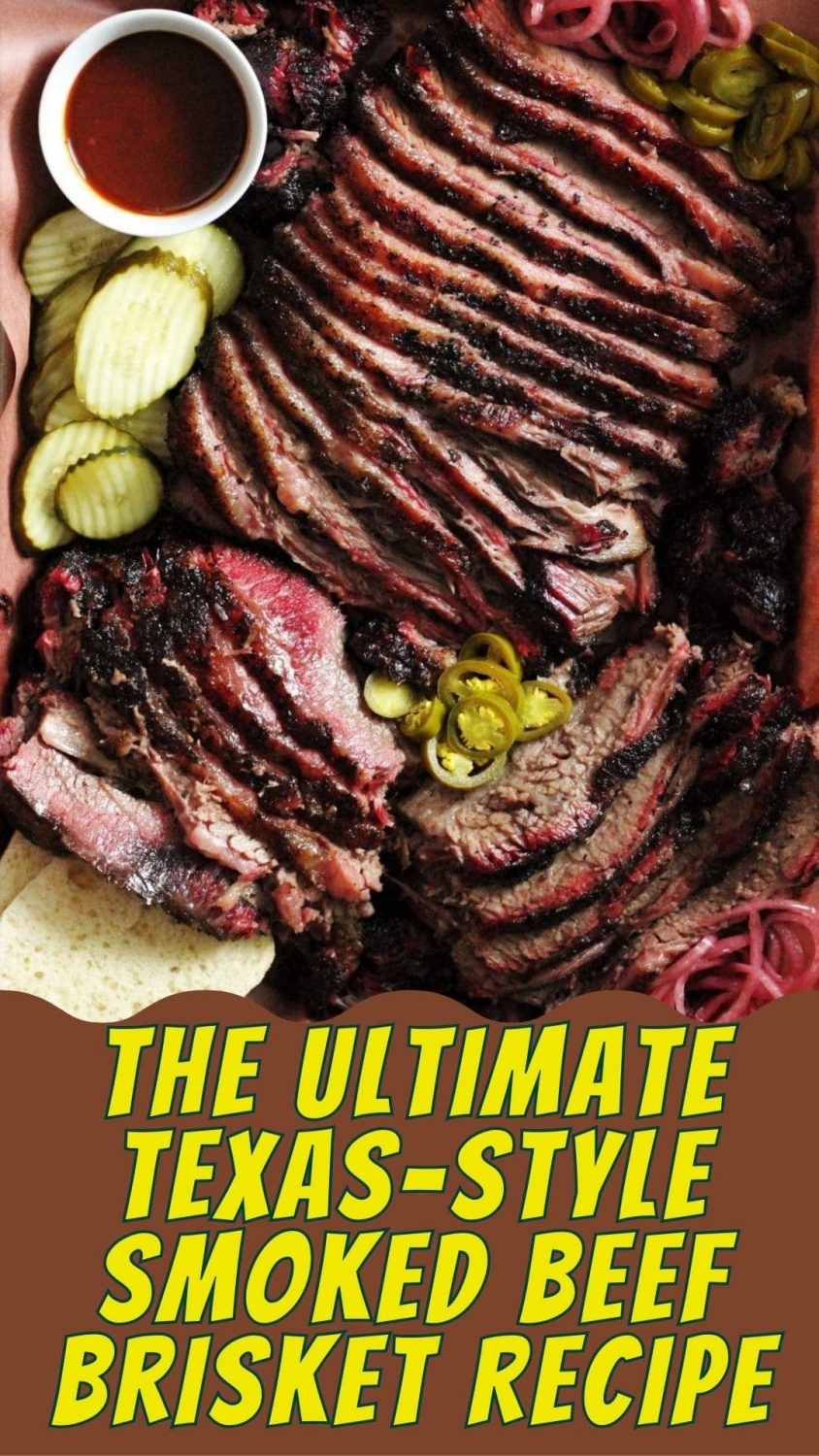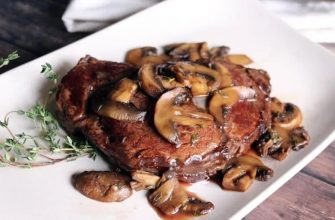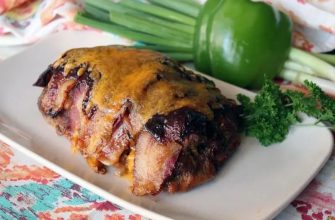This recipe goes beyond a simple cooking method; it’s a process that combines salt, pepper, smoke, and time to create the most extraordinary brisket you’ll ever taste.
Mastering the Art of Smoked Brisket
If you find yourself intimidated by the idea of smoking a large and expensive brisket for the first time, fear not. I have extensively tested various methods and recipes to ensure you achieve perfect results every time, using a relatively straightforward approach.
Once you experience the succulent juiciness of this brisket, you’ll eagerly look forward to smoking another one. Remember, barbecue, especially brisket, is best learned through hands-on experience. So let’s dive in and give it our best shot!
Essential Tools for Smoking Brisket
To make your brisket-smoking journey smoother, here are some recommended tools. While not all are necessary, they certainly make the process easier:
Smoker:
Choose a smoker that can maintain a steady temperature of 225 degrees F. Personally, I prefer using my CampChef SmokePro, but any reliable smoker will do the job.
Large Cutting Board:
You’ll need a spacious cutting board to slice the brisket once it’s ready to serve.
Meat Thermometer:
Invest in a reliable meat thermometer, such as the Thermapen Mk4, to ensure your brisket reaches the perfect internal temperature.
Butcher Paper:
For that authentic Texas-style brisket, wrap it in butcher paper during the stall. This step is crucial for achieving a juicy and tender brisket with a delectable caramelized bark.
Chef’s Knife:
A sharp chef’s knife is a must for slicing your brisket with precision.
How to Smoke a Brisket
Smoking a brisket is a time-intensive process that requires patience and attention to detail. Follow these steps to achieve the best-smoked brisket of your life:
Select Your Brisket:
Opt for a whole packer brisket, which includes both the point and flat muscle. Consider choosing prime-grade beef for enhanced flavor and juiciness. Plan for approximately 1/2 pound of brisket per person you’ll be serving.
Trim the Brisket:
While some Texans prefer not to trim their brisket, trimming is essential for achieving the desired final outcome. Top smokehouses typically trim their briskets. Pay close attention to this step as it greatly impacts the end result.
Season Your Brisket:
True Texas-style brisket is seasoned with only coarse salt and coarse black pepper. For an extra layer of flavor, you can also add garlic powder. Mix the spices and sprinkle them over the brisket to ensure even distribution.
Start Smoking:
Use a hardwood of your choice in your smoker. Oak is a popular option, but cherry can also be a delightful addition. The key is to maintain consistent heat and produce a steady flow of thin blue smoke.
Wrap the Brisket:
This step is crucial for achieving a tender and flavorful brisket with a beautifully caramelized bark. While opinions differ between using foil and butcher paper, I recommend using butcher paper for this recipe. It adds a remarkable smoke flavor and preserves the delicious bark.
Wrap the brisket tightly, folding the edges over until it’s fully sealed. Place the wrapped brisket back in the smoker, ensuring the folded edges are facing downward. Continue smoking at 225 degrees F until the internal temperature of the brisket reaches 202 degrees F at its thickest part (make sure to measure the temperature in the meat, not the fat).
Rest Your Smoked Brisket:
This step is absolutely vital, so don’t skip it. Resting allows the hot and flavorful juices to settle and redistribute within the meat, resulting in a perfectly tender and delicious brisket. Rest the brisket for at least one hour, leaving it in the butcher paper on a cutting board or baking sheet. If needed, you can rest it for longer by wrapping it in a sacrificial towel and placing it in an insulated cooler.
Slice Your Brisket:
To maximize tenderness, slice the brisket against the grain. Keep in mind that the brisket consists of two overlapping muscles with different grain directions. You can choose to separate the point and flat sections, slicing each against the grain individually. However, this may result in some pieces lacking bark on top. Alternatively, follow the traditional Texas method by splitting the brisket down the middle, turning the point 90 degrees, and slicing it that way. Finish by slicing the flat in the opposite direction. While some slices may not have perfect grain alignment, tender meat compensates for it.
Serve Your Magnificent Smoked Brisket:
In Texas, you can request either fatty or lean brisket. The fatty portion is the point, while the lean section is the flat. Indicate which slices are which when serving. Personally, I prefer the fatty portion, but I always grab a slice of the lean as well for its incredible smoky flavor. For an authentic experience, serve the brisket on a platter lined with butcher paper, accompanied by pickles, white bread, pickled red onions, pickled jalapenos, and sauce on the side.
Smoking Time for Brisket
It’s impossible to provide an exact smoking time because BBQ is an art, not a science. Here’s a general guideline to help you plan:
For the initial smoke phase, expect approximately 8 hours at 225 degrees F to reach 165 degrees F internal temperature for a 12-13 pound brisket. However, be aware of the “stall” phase, which occurs between 145 degrees F and 165 degrees F. During this phase, evaporation cools the brisket while your grill continues to cook it. The stall duration varies for each brisket, so having a reliable internal thermometer is essential.
The second phase, after wrapping the brisket in butcher paper, can take anywhere from 5-8 hours. It’s wise to allow an extra 2 hours for each brisket cook. If the brisket finishes early, you can place it in a cooler for further resting. Conversely, if it finishes late, you’ll avoid hungry guests by planning ahead.
In summary, allocate approximately 12-18 hours for the entire brisket cooking process, including the initial smoke to 165 degrees F and the wrapped smoke to reach 202 degrees F.
Tips for the Perfect Smoked Beef Brisket
Consider these expert tips to enhance your smoked brisket game:
Pre-mix your spices:
Combine your salt, pepper, and garlic in an old spice shaker or container in advance. When seasoning the brisket, shake the spices from a height of about 2 feet. This ensures an even layer of salt, pepper, and garlic across the entire surface.
Fat side up or down:
The debate over whether to smoke the brisket with the fat side up or down continues. Truthfully, it doesn’t make a significant difference. Place it according to your preference.
Embrace the resting period:
Resting your brisket is crucial. Allow it to rest for at least one hour on a cutting board or baking sheet, still wrapped in butcher paper. For longer resting periods, wrap the brisket in a towel and place it in an insulated cooler. Resting ensures optimal tenderness and temperature for serving.
Variations for Smoked Brisket
Explore these variations to further enhance your smoked brisket experience:
Slather it up:
Some people prefer using a binder, such as yellow mustard, to help the rub adhere to the brisket. Mustard adds a tangy flavor and aids in creating a beautiful bark. While not necessary, it’s worth trying to see if you enjoy the results.
Choose your wrap:
While butcher paper is recommended for this recipe, foil is also a viable option. Foil is the original Texas crutch used to push the brisket through the stall. It retains moisture inside the meat, but may result in a softer bark. Experiment with both methods to find your preferred style.
Adjust the temperature:
While low and slow is the traditional approach, some brisket enthusiasts prefer a higher cooking temperature. Smoking at 275 degrees F can shorten the cooking time. Keep in mind that the perfect cooking timeline varies, so monitor the internal temperature of your brisket.
Ingredients:
- 1 whole packer brisket (12-14 pounds)
- 2 tablespoons coarse kosher salt
- 2 tablespoons coarse ground black pepper
- 2 tablespoons garlic powder (optional)
Instructions:
Store the brisket in the refrigerator until you’re ready to trim it. Cold brisket is easier to work with. Flip the brisket, placing the point end underneath. Remove any silver skin or excess fat from the flat muscle. Trim the large crescent-shaped fat section, creating a smooth transition between the point and flat. Trim any loose meat or fat from the point. Square the edges and ends of the flat. Flip the brisket over and trim the top fat cap to a thickness of approximately 1/4 inch across the surface.
In a mixing bowl or empty spice container, combine the kosher salt, black pepper, and garlic powder. Sprinkle the mixture evenly over the brisket, ensuring all sides are well-seasoned.
Preheat your smoker to 225 degrees F, using indirect heat and hardwood smoke. Place the brisket on the smoker, with the point end facing the main heat source. This thicker part can handle the additional heat. Close the lid and smoke until the internal thermometer reads 165 degrees F (typically around 8 hours).
On a large work surface, roll out a sheet of butcher paper or foil and position the brisket in the center. Wrap the brisket by folding the edges over, creating a tight seal. Return the wrapped brisket to the smoker, seam side down, and continue smoking at 225 degrees F until the internal temperature reaches 202 degrees F in the thickest part of the meat (this can take 5-8 hours).
Carefully remove the brisket from the smoker and place it on a large cutting board. Allow the brisket to rest for at least 1 hour before slicing. This resting period allows the flavors to meld and the juices to redistribute, resulting in a more tender and flavorful brisket.
Slice the brisket against the grain for maximum tenderness. Note that the brisket consists of two overlapping muscles with different grain directions. You can separate the point and flat sections and slice each against the grain individually, but some slices may lack bark on top. Alternatively, follow the traditional Texas method: split the brisket down the middle where the point overlaps the flat, turn the point 90 degrees, and slice it that way. Finish by slicing the flat in the opposite direction.
Serve your beautifully smoked brisket, indicating which slices are fatty (point) and which are lean (flat). For an authentic touch, serve the brisket on a platter lined with butcher paper. Accompany it with pickles, white bread, pickled red onions, pickled jalapenos, and sauce on the side.
Mastering the art of smoking brisket takes practice and patience, but the reward is a mouthwatering Texas-style delicacy that will impress your guests and leave them craving more. Enjoy the process, savor the flavors, and create unforgettable moments with each perfectly smoked beef brisket you prepare.














